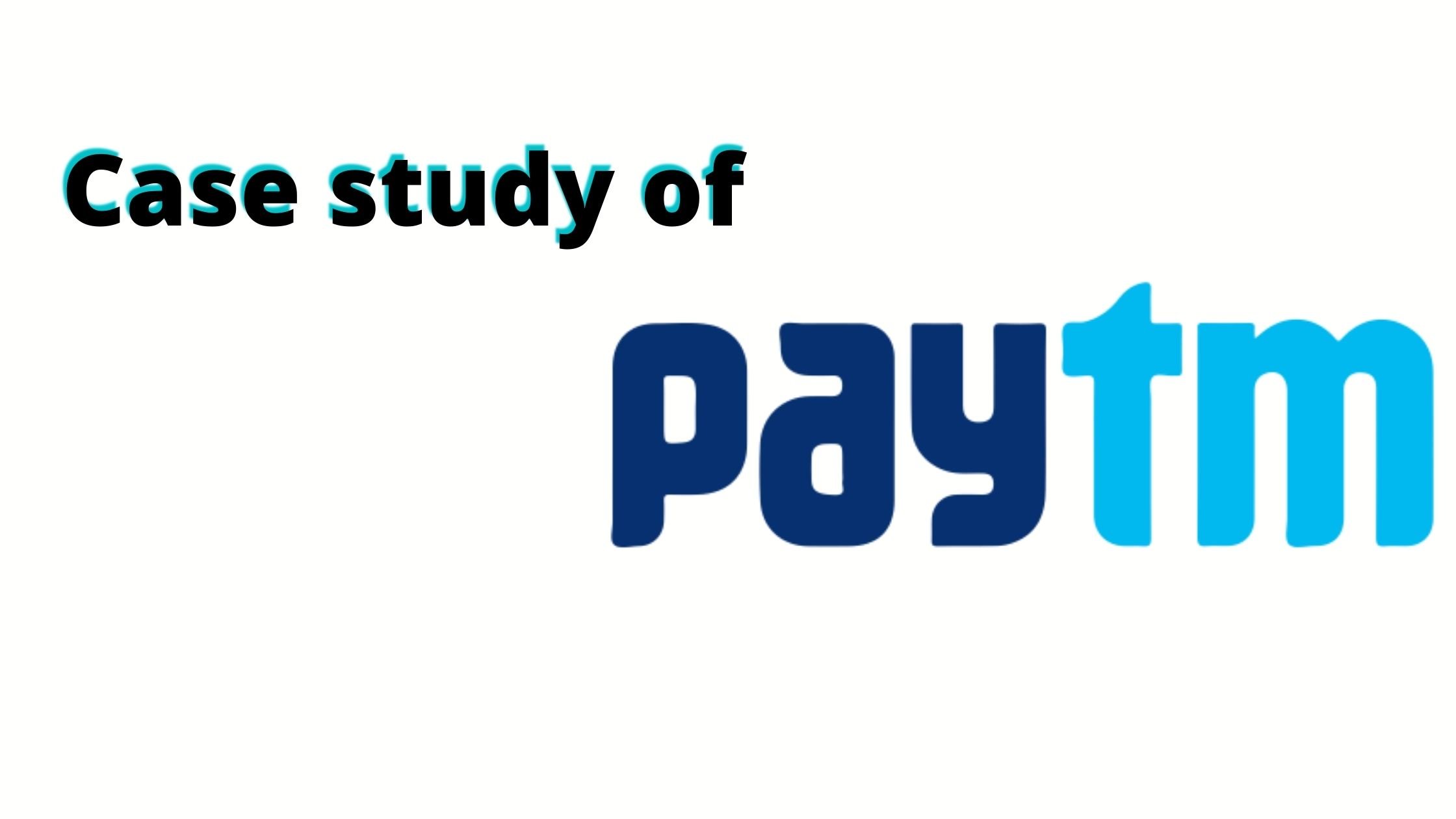CASE STUDY OF PAYTM
Commenced by Vijay Shekhar Sharma in the year 2010 as a recharge platform, Paytm became the most successful mobile payment and money transfer app used in India a few years back. For a country which had 95% of monetary transactions made in cash prior to demonetization, it was not easy for Paytm to make its customer believe in online transactions but Paytm did the hard work and enabled people to use the cashless transactions. And by the way of cash backs and other offers Paytm accelerated ahead of its rivals like Freecharge, PayU, Mobikwick and etc.

Introduction
Commenced by Vijay Shekhar Sharma in the year 2010 as a recharge platform, Paytm became the most successful mobile payment and money transfer app used in India a few years back. For a country which had 95% of monetary transactions made in cash prior to demonetization, it was not easy for Paytm to make its customer believe in online transactions but Paytm did the hard work and enabled people to use the cashless transactions. And by the way of cash backs and other offers Paytm accelerated ahead of its rivals like Freecharge, PayU, Mobikwick and etc.
But the picture in today’s time is a bit changing. After the entry of players like Google pay and PhonePe, the brand is starting to fall behind. And given the stating of Whatsapp pay, things are only going to be tougher for the company in times to come.
Business Aspects and Expansions
Paytm has always concentrated on the customer-centric approach. This is true from the fact that even before Paytm started with wallet services the company built 24*7 customer care services. It realized that digital payments are still new in India and so it had to make sure that their customers get all the support they needed. This enabled people to get their queries solved and trust their money with Paytm. It has nearly spent Rs 14,500crore to convince Indians to substitute cash with digital payments.
In 2014 the company did one of the biggest launches that it its Paytm Wallet. This enabled the customers to directly pay without entering an OTP again and again. This was again something new for its customers, given they thought using OTP kept their money safe. Now, one might think this is a wrong move here. However, this was one of the characteristics which gain Paytm the best results. When a user kept its money in the Paytm wallet they were not charged. But, Paytm kept the money with Escrow accounts which fetched Paytm interests.
Demonetization- An opportunity
While the demonetization spelled doom for most of us, it was actually very fortunate for Paytm. Our honorable Prime Minister had the vision for the economy to go fully digital. Digitalization can help the government track the money and essentially decrease the influx of black money in the economy. Back then Paytm was the biggest digital payment app. And so when the demonetization took place it went through the roofs. It widened its unit services to retail stores, Kiranas, vegetable markets, salons, and even in the smallest of shops. It was everywhere. Paytm grabbed the biggest piece of all the online payments happenings during that period.
Given the progress, Paytm was making and the amount of government support they were enjoying, it got into aggressive marketing which showcased the involvement of retail shop owners.
The challenge
-
Paytm vs PayPal
While Paytm was busy counting the number of profits they have made, in course this a US-based payments company Pay Pal filed a case against Paytm for using a logo similar to its own. Paypal has been using that logo since 2007. This would create confusion in the minds of Indian customers about the platform. The case is still going and if Paypal wins then Paytm has to pay heave charges for trademark infringement.
-
UPI (Unified Payment Interface)
With the launch of IPS two major groups, Google pay and phone Pe entered the market and people preferred UPI transactions over Paytm wallet transactions. To stay in the run Paytm launched BHIM UPI transaction mode but recorded lower transactions with its rivals. Because Paytm had probably thought that their wallets will be sufficient to save them against these big players. But Google pay actually went rogue with the middle class of the country like doing transactions in order to gain some extra money. But with that people actually got used to using google pay. Using less money in marketing and instead give that way to the customers.
Current scenario
Paytm has been losing its share in front of its bigger competitions. To add to the worst, the Jio- the Facebook deal is posing bigger threats to the company. Jio has already started onboarding local shops on their platforms. And given that Whatsapp has nearly 400 million users in India, payment transactions would be a lot easier and convenient here which will result in more threats to Paytm. And this has also raised concerns and issues with the people who have invested in Paytm valuation and business models. With the losses going up, it would be difficult for Paytm to keep its head above the water and continue the trust of its investors
A good example of why you must choose your niche. If you ever used Paytm, you will realize that the company actually tried to widen into a lot of spaces. It tried to have movie bookings, travel, shopping deals ad, etc. And maintaining so much requires an equal amount of capital and having concerned investors on board will not make that happen for anyone.
BY
SHRUTI KULSHRESTHA












